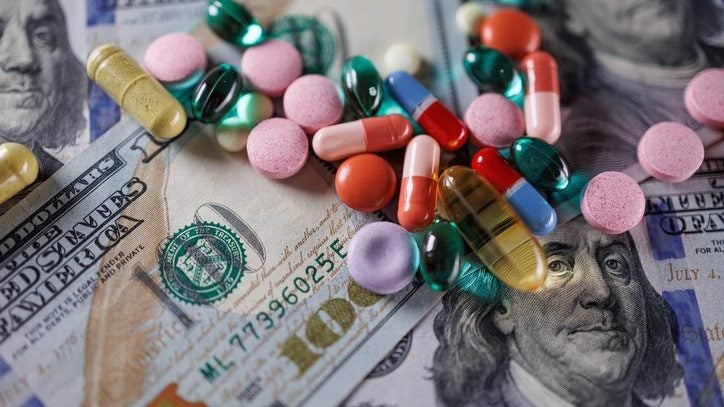US President Donald Trump has imposed a sweeping 10% tariff on all imported goods, alongside additional country-specific duties, as part of his broader effort to shift global trade and increase domestic manufacturing.
However, it appears that the pharma industry has avoided a big blow – for now. A factsheet released by the White House said that finished pharmaceuticals are not subject to the reciprocal tariff. Shares in AstraZeneca and GSK climbed today (3 April) following news of the exemption.
While pharmaceutical imports are exempt from the steeper reciprocal tariffs – such as the 20% duty on European goods and 34% on Chinese imports – the industry remains vulnerable to the broader economic impact of the new trade policy.
The indirect impact on Pharma
Although finished pharmaceuticals are excluded from the tariffs, the 10% blanket tariff on all imports is still expected to have significant consequences for the industry.
Pharmaceutical companies rely on a vast and intricate global supply chain for raw materials, active pharmaceutical ingredients (APIs), and manufacturing equipment – many of which will now be subject to higher costs.
Analyst chatter has suggested that predicting the precise impact of tariffs on pharmaceutical companies is difficult due to their vast and complex manufacturing networks, which span multiple geographies and involve numerous suppliers. Even if finished drugs themselves are not subject to higher tariffs, the increased cost of imported inputs could still disrupt manufacturing and raise prices.
"Drug costs are still expected to rise, given the overall effects of the tariffs in many countries. The pharma industry is still affected by the tariffs in other ways, such as paying more for packaging," said GlobalData analyst Cyrus Fan.
GlobalData is the parent company of Pharmaceutical Technology.
Trade association Biotechnology Innovation Organization (BIO) released survey results and analysis last month, which highlighted that 90% of US biotech companies rely on imported components for at least half of their US Food and Drug Administration (FDA)-approved products. Most of the US biotech companies that are members of the BIO (94%) forecast a “[surge in] manufacturing costs if tariffs are placed on imports from the European Union (EU)”.
The US has seen a decline in domestic manufacturing capacity, and pharmaceutical plants require specialised infrastructure, regulatory approvals, and skilled labour – making rapid relocation a significant challenge. While companies such as Eli Lilly and MSD have expanded their US production to mitigate tariff risks, these investments are long-term strategies rather than immediate solutions.
MSD recently opened a $1bn manufacturing facility in North Carolina to increase production of its blockbuster HPV vaccine, Gardasil. The company described the investment as part of a broader $12bn commitment to US capital investment since 2018, with another $8bn expected by 2028.
Other pharma companies such as Johnson & Johnson (J&J) have also made similar moves in the last few months. Such initiatives suggest that companies with existing US manufacturing infrastructure may be better positioned to weather the tariffs than those more reliant on overseas production.
Potential for further trade conflict
The exclusion of pharmaceuticals from the initial round of country-specific tariffs does not guarantee long-term immunity. This is a sentiment echoed by Fan, who said that there are still expectations of higher tariffs for the pharma industry in the future.
The White House has repeatedly signalled an interest in reshoring pharmaceutical production, and Trump has previously floated the idea of imposing 25% or higher tariffs on drug imports.
From an international perspective, GlobalData analyst Eoin Ryan highlighted that pharmaceuticals have traditionally been excluded from trade wars under World Trade Organization (WTO) agreements, but the industry is not necessarily protected from future retaliatory tariffs.
Ryan also noted that while some EU-manufactured medicines may ultimately be excluded from tariffs, an extended US-EU trade dispute could still damage the pharmaceutical sector. The uncertainty surrounding Trump’s tariff policy – particularly given previous delays and adjustments to tariff announcements – makes it difficult for companies to plan ahead.
The pharmaceutical industries in Ireland and Germany, two of the EU’s largest exporters to the US, are particularly vulnerable. The Irish Exporters Association (IEA) CEO Simon McKeever responded to the tariff announcement today, saying: “Whilst we welcome that pharmaceuticals are for the moment not subject to this tariff, there are many Irish-owned and Irish-based exporting companies who are now faced with an unprecedented challenge.”
Outlook for the industry
If pharmaceuticals are added to the list of products for which tariffs are applied in the future, the sector will likely see rising production costs, supply chain disruptions, and higher drug prices for consumers. These higher costs could also trickle down into the clinical trial supply chain, potentially making the US a less attractive place to conduct studies.
Ryan also suggested that US trade negotiators might keep the threat of tariffs as leverage.
He added: "There is certainly anxiety within some EU policymaking circles that President Trump refrained from imposing pharmaceutical tariffs only for the purpose of 'keeping a gun on the table'."
While this could mean there's room for a deal – where the EU negotiates lower tariffs and the US secures enough concessions to claim victory – Ryan warned that failure to reach an agreement could have serious consequences.
Ryan commented: "If negotiations fail, and US tariffs are eventually passed through for pharmaceuticals, the impact would be severe for EU companies, while US consumers would face eye-watering price rises for imported EU medicines."
Ultimately, expanding US pharmaceutical manufacturing to replace foreign supply chains would take years. For now, while the worst-case scenario of direct tariffs on drug imports has been avoided, the industry remains in a precarious position.









